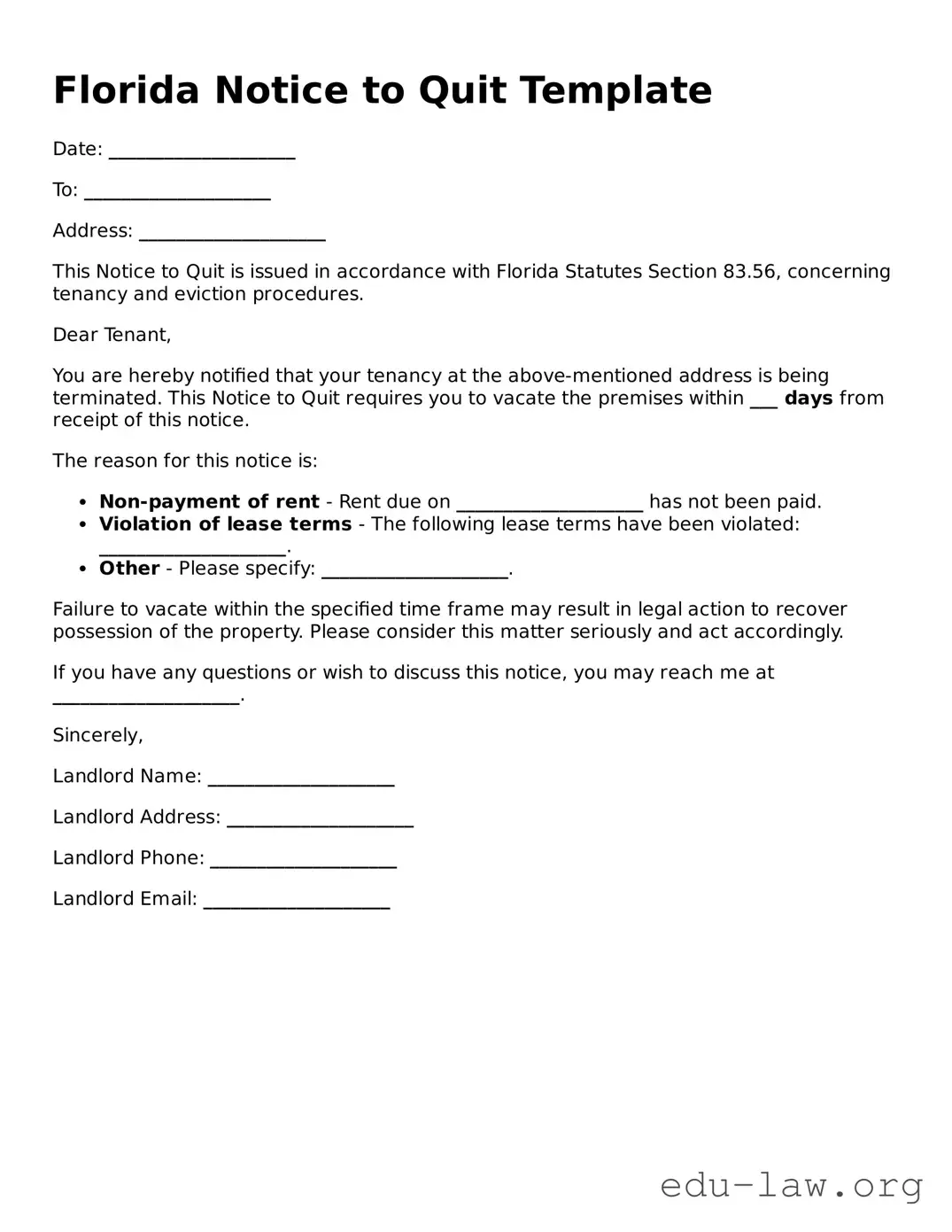What is the Florida Notice to Quit form?
The Florida Notice to Quit form is a legal document used by landlords to notify tenants of their intention to terminate a lease agreement. It is often issued when a tenant has violated the terms of their lease or has failed to pay rent. This notice is a critical first step for landlords intending to pursue eviction. It serves as a formal communication, outlining the tenant's obligations and the consequences of not fulfilling them.
When should a landlord use the Notice to Quit?
A landlord should issue a Notice to Quit when they need the tenant to vacate the property. Common situations that necessitate this notice include non-payment of rent, lease violations, or when the lease agreement is due to expire. Depending on the circumstances, the notice period can vary; for example, a 3-day notice is typically used for non-payment of rent, while other lease violations may require a 7-day notice.
How does a landlord complete the Notice to Quit?
The landlord must fill out the form with relevant details, including the tenant's name, the property address, and the specific reasons for the notice. It is essential to be clear and concise in stating why the notice is being issued. After completing the form, the landlord must serve it to the tenant properly, which can be done by personal delivery or certified mail.
What are the consequences of ignoring a Notice to Quit?
If the tenant ignores the Notice to Quit, they may face legal consequences, including eviction. The landlord can proceed to file for eviction in court after the notice period has expired, assuming the tenant has not complied. It is important for tenants to take this notice seriously and respond in a timely manner to avoid further action.
Is there a required time frame for the Notice to Quit in Florida?
Yes, Florida law specifies the time frames for different situations. For unpaid rent, a landlord must provide a 3-day notice. For lease violations, a 7-day notice is typical. In some cases, a 30-day notice may be required if the lease is being terminated without cause. It's essential to adhere to these time frames to ensure that the notice is valid.
Can a tenant contest a Notice to Quit?
Yes, a tenant can contest a Notice to Quit if they believe it has been issued in error or if they have rectified the issue (e.g., paying overdue rent). Tenants should document any communications and evidence related to their case. If the matter escalates to court, tenants will have the opportunity to present their defense during the eviction proceedings.
What should a tenant do upon receiving a Notice to Quit?
Upon receiving a Notice to Quit, a tenant should carefully read the document to understand the reasons for the notice and the deadline for compliance. It is advisable for the tenant to communicate with the landlord to seek clarification or address any issues. If necessary, tenants may also wish to seek legal advice to understand their rights and responsibilities in this situation.
